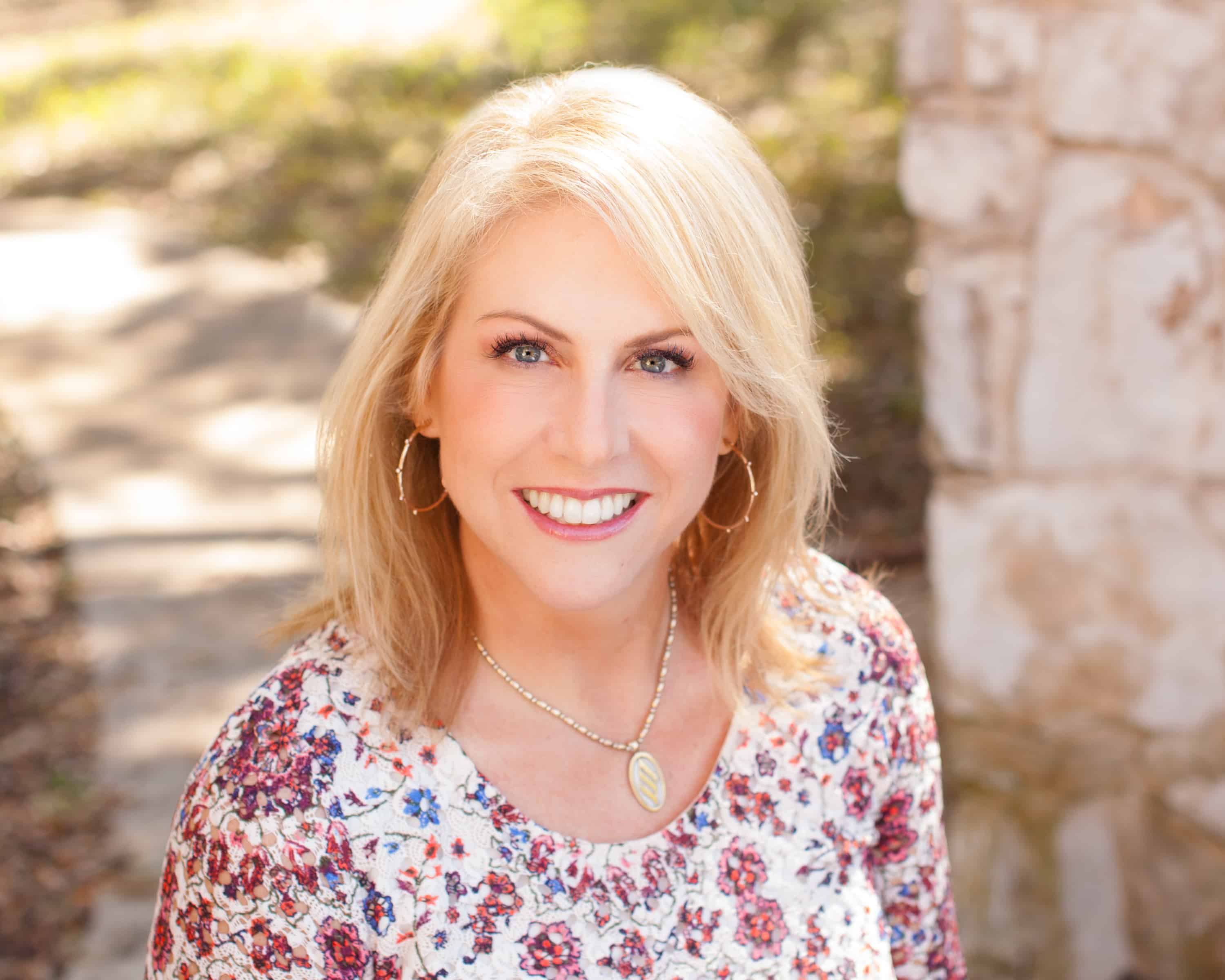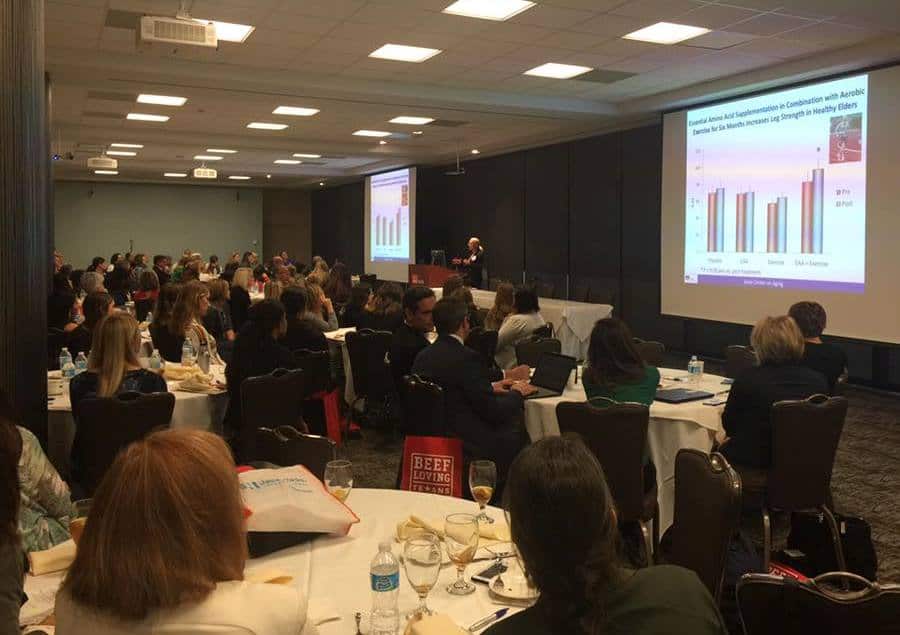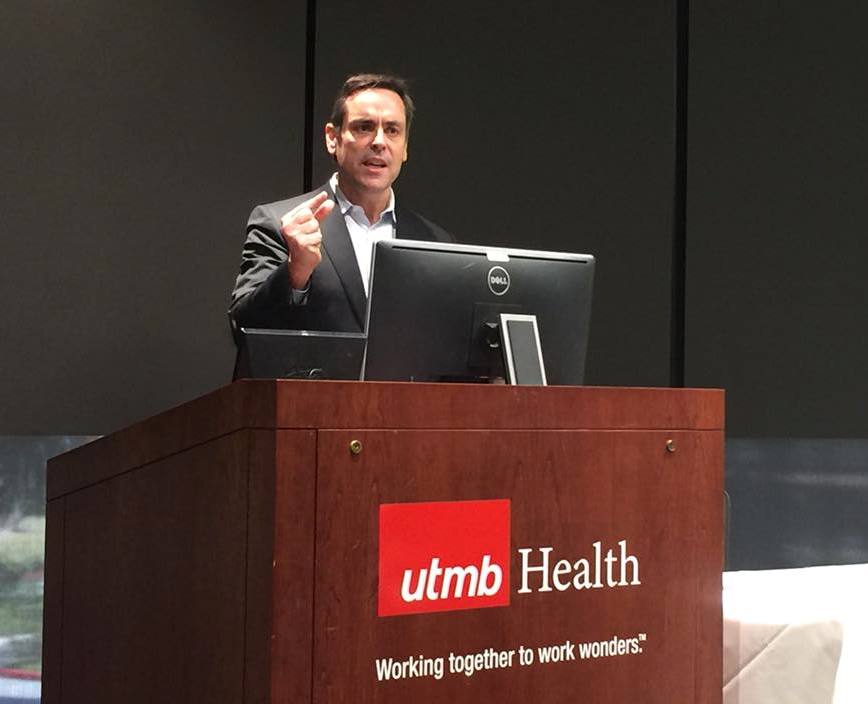Texas Beef Council Sponsors Protein Symposium In Galveston
Texas Beef Council Sponsors Protein Symposium In Galveston
by Caitlin Richards
Some days, beef producers have their backs against the wall. But, on other days, beef producers have the upper hand. In Galveston on November 19, 2016, beef producers had control of the message.
Kelley Sullivan, co-owner of Santa Rosa Ranch and a recently appointed Texas Beef Council Board Member, spearheaded the Optimizing Protein Through the Healthspan symposium, which brought researchers and healthcare practitioners together to discuss the facts about protein.

From the ‘Meatless Monday’ movement to bookstore shelves filled with false wellness and nutrition informa-tion, as well as research studies misinterpreted by the media, consumers are confused. The symposium held at the University of Texas Medical Branch in Galveston (UTMB) targeted the healthcare ‘frontline’ – doctors, nurses, dietitians and physician assistants – about the health benefits of protein and provided recommendations to use with their patients.
“Healthcare practitioners want to make very confident recommendations to their patients,” Sullivan said. “They want those recommendations to be based on good science. We wanted to make sure we provided those science-based facts for these healthcare practitioners to put into practice.”
There is a variety of research with specific outcomes that show how protein consumption and usage can be used healthfully throughout the lifespan. UTMB’s Department of Nutrition and Metabolism and Center for Recovery, Physical Activity and Nutrition are sources of some of those studies and stand as one of the top three leading research institutions in the United States.
Together with the National Cattlemen’s Beef Association, the Texas Beef Council, and the Department of Nutrition and Metabolism and Center for Recovery, Physical Activity and Nutrition hosted national nutrition and dietetic experts to present at the symposium. They shared their research regarding protein intake and needs throughout the lifespan with a variety of healthcare practitioners in attendance.
“By having a forum like this, peers are together in one room,” Sullivan said. “This type of format is very productive, as opposed to just receiving a scholarly journal, white papers in the mail, just reading about something or seeing news reports.”
The symposium offered the opportunity for both sides – researchers and practitioners – to share information. The authors of the studies were able to engage with attendees by answering questions and offering additional insight into the studies’ methodologies.

“That’s what we need to do,” Sullivan said. “Healthcare practitioners need to be armed with science-based recommendations that they can take into their practices, resulting in better lifestyles and better outcomes for their patients.”
UTMB President David L. Callender MD, MBA, FACS opened the symposium, stating the field of nutrition and wellness faces many challenges, particularly concerning healthcare practitioners trying to dispel all of the myths that are not backed by science, but rather by pseudoscience.
“We want to take advantage of every opportunity to help people understand what really is the right information about how we use good nutritional facts to make good choices that promote health and wellness in our lives and in the lives of our friends and families,” Callender said.
The day was filled with opportunities for healthcare practitioners and researchers to face some of those challenges together. The list of presenters covered protein intake and needs from infants to the elderly, and even offered a sports nutrition perspective.
Kelli Hawthorne MS, RD, LD the Director of Clinical Research and Department of Pediatrics at The University of Texas at Austin Dell Medical School opened the day with a discussion on protein needs in infants and adolescents.
Heather Leidy, PhD associate professor in the Department of Nutrition Science at Purdue University, followed with a discussion on weight management and optimal protein usage throughout the day. Atlanta Hawks Sports Dietitian Maria Spano MS, RD, CSCS, CSSD was next with a discussion on sports nutrition from a performance and recovery standpoint.
The afternoon featured some of UTMB’s own faculty, as research at UTMB has focused on protein and metabo-lism for the last 20 years. Doug Paddon-Jones, PhD, a professor in the Department of Nutrition and Metabolism discussed protein’s role in protecting muscle health during aging. Stuart Phillips, PhD, a professor in the Department of Kinesiology and School of Medicine at McMasters University in Canada, followed with a discussion on protein’s role in weight loss.

Elena Volpi, MD, PhD, a professor in the Department of Internal Medicine-Geriatrics and Director of the UTMB Sealy Center on Aging, wrapped up the day with a discussion on the physician’s perspective in aging.
There were over 115 participants in attendance and most were physicians, nurses and dietitians from around the State of Texas. Continuing Medical Education credits were also offered to attendees. Participants were offered a Texas Beef Council promotional bag with Nolan Ryan Texas Beef Jerky, protein information, recipes and research studies.
After each presentation, symposium participants were able to engage the presenters with numerous questions about how the research could impact their patients. A question and answer forum was also held in both the morning and afternoon to allow for even further questioning. The thorough presentations, combined with comprehensive questions from the audience, provided a day full of information.
“We were very pleased with the turnout,” Sullivan said. “We had a great cross-section of healthcare practitioners, which was our intent. I was most gratified to just see the attention that everyone spent. We had a captive audience from the time we started that morning until the time we concluded. Everyone was so engaged and inquisitive – we could have continued for several more hours!”
Symposiums like Optimizing Protein Through the Healthspan are interactions that healthcare practitioners want and need. Most admit that they are provided limited nutrition information during their formal medical education.
As future physicians, they are taught how to treat conditions, not necessarily how to prevent. There is a void of information about basic preventative health strategies, so a nutrition-based conference is something that the symposium attendees said is greatly needed.
Blake Rasmussen, PhD professor and chair of UTMB Department of Nutrition and Metabolism said a symposium like this allows the people working every day in the hospital or the clinic as nurses or healthcare practitioners, who may not be completely up to date with all of the recent research, to come in and spend a day listening to people who actually spend their life doing research on protein and the health benefits.
“It gives healthcare practitioners the opportunity to hear the most current research directly from the scientists doing the nutrition research rather than indirectly from reading a popular diet book about the good or bad aspects of protein,” Rasmussen said. “So I think that’s the benefit.”
As the co-owner of Santa Rosa Ranch, Sullivan is proud to see her checkoff dollar at work. Sullivan admits she is biased and would have preferred for the entire symposium to be about beef, but the main goal was to tell the story of the healthfulness of beef as a part of a balanced and healthy diet.
“As a producer and someone coming from the industry, I consider it to be our responsibility, quite frankly, to take the information about the product we produce, as well as the wonderful research that is being done and make sure it gets to you,” Sullivan said to the healthcare practitioners in the audience. “You are the ones seeing patients on a daily basis and counseling them on healthful lifestyles.”
Rasmussen and Sullivan both hope that this protein-focused symposium is the first of many. Healthcare practitioners from the Galveston and Houston area are not the only ones who need to hear the research that was presented at the symposium – this information needs to be communicated to healthcare professionals around the United States.
“We are thinking of doing this more often because we would really like to highlight the great research we are doing in metabolism and protein nutrition at UTMB,” Rasmussen said. “We are happy that we were able to put this on and we look forward to perhaps doing this more in the future.”
Beef has a broad consumer market with a variety of consumer needs to meet. Families, physicians and critics are only a few. The symposium is one way the Texas Beef Council is ensuring the right message is being shared with the broad consumer market.
“We are taking control and that’s the whole thing,” Sullivan said. “We are working to get this good news about what we produce out to the public.”
The symposium was a labor of love for Sullivan. She is a fifth-generation Galvestonian and UTMB has a special place in heart because she was born at the university hospital.
The Sullivan Family has been in the beef cattle business for over 100 years where they ran commercial cattle on the west end of Galveston Island before expanding Santa Rosa Ranch, their seedstock Brangus and Ultrablack operation, into Grimes and Houston counties.
Sullivan and the Texas Beef Council appreciate this partnership with UTMB and look forward to working with them on future symposiums. There are discussions about holding additional symposiums in 2017 around Texas. Sullivan wants to encourage other producers to think about forums they can use to tell their beef story.
“If we don’t take control of the message and start having these conversations, no one will,” Sullivan said. “We have to be proactive and not allow people to put out false information about what we do to the public.”
“We are proud of the food we produce and our consumers need to appreciate the effort we take in producing the most healthy, nutrient-dense form of protein available. Eat more beef!”
This story was run in the Weekly Livestock Reporter.

